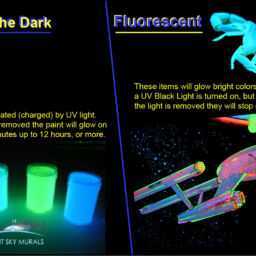Green electricity is clean electrical power produced from sources or in such a manner that very little or no harm is done to the environment. Conventional methods of power generation like the burning of coal and gas in power stations cause millions of tons of carbon dioxide emissions into the atmosphere. The large quantities of carbon dioxide in the air play a major role in the green house effect which is the primary cause of global warming. Though it is believed that electrical power production will always generate pollutants, there are sources that are exponentially cleaner than others such as those that involve the siphoning of the natural energy flows of our planet otherwise known as renewable energy sources.
Renewable Sources of Green Electricity
Wind power
Clean electricity can be generated using wind power through the use of turbines that harness the force of the blowing wind. Wind turbine technology has made much advancement in the past years that has bolstered wind power as the world’s fastest growing green electricity resource. Wind turbines have greatly improved and can now silently produce electrical power whose efficiency can rival that of conventional coal-fired and nuclear power plants. Technology has also widened the range of wind power generation. Before windmills can only be built on lands wind strongly blowing winds such as cliffs and sea shore. Today, windmills can be found in the middle of the sea.
Solar power
Solar power is considered the most abundant source of electricity in existence as the power of the sun is said to remain unlimited for millions of years to come. Solar photovoltaic plates can be attached in rooftops or walls and solar panels can be placed in the yard to harness solar energy and directly turn it into electricity. Semiconductors now allow efficient solar power absorption even during cloudy days, and solar batteries can be used to store excess energy for use during the night. Today, solar plates can be integrated into houses and buildings in a way that they remain indistinguishable.
Hydro power
Hydro power generates electricity by using water turbines to collect the energy found in running water. Water power is said to be the most easily distinguished source because there is always a large dam near every hydro power plant. In local communities, small dams can be built near streams and rivers to power small water engines to generate electricity.
Wave power
Wave power produces electricity by harnessing the huge amounts of energy carried by sea waves. Many devices have already been developed to help contain wave energy in the most efficient way possible. Wave power plants can now be found almost anywhere there are strongly crashing waves.
Tidal power
Tidal power is considered the most predictable of all renewable energy sources as today’s technology can easily and accurately predict the rise and fall of tides. The most common way of capturing the energy carried by the change of tides is the construction of a barrage across an estuary, storing water behind it as the tide rises and then releasing the stored water through turbines at low tide. Another method is the use of marine current turbines that capture the energy of the tidal currents.
Geothermal
Geothermal power is generated by harnessing the energy coming from hot and molten rocks found way beneath the earth. The said energy usually comes to the surface in the form of steam which can be captured using steam turbines that can directly convert it into clean electricity. In other geothermal power spots where steam is not produced, water can be pumped down and geothermal heat will turn the said water to steam.
Biomass
Biomass power is generated by harnessing the energy of living and recently living plants as well as their wastes. Today, agricultural wastes and plants grown specifically for biomass purposes are used to power biomass power stations. Plants absorb carbon dioxide as they grow and then release it upon death, so using plants as fuel adds no additional carbon dioxide in the atmosphere.
Landfill gas
Landfill gas power is generates electricity buy burning the methane gas emitted by the decomposing rubbish in landfills. In the process, carbon dioxide is released into the atmosphere instead of the more harmful methane gas.
Waste incineration
Waste incineration produces electrical power by burning solid wastes. Of all green energy generation processes, incineration is considered to be the most harmful because of the huge amounts of harmful gas by-products produced.
Biosphere Technology
Biosphere technology is the newest addition to the arsenal of green electricity solutions. Biosphere tech uses biosphere machines to turn solid wastes into steam and then into green electricity. Since the entire biosphere process is executed inside very oxygen limited chambers, very little carbon emissions are released into the atmosphere. Today, biosphere gasification is considered to be the best alternative source of energy because of its energy generation efficiency as well as its waste disposal benefits.
AUTOPOST by BEDEWY VISIT GAHZLY





